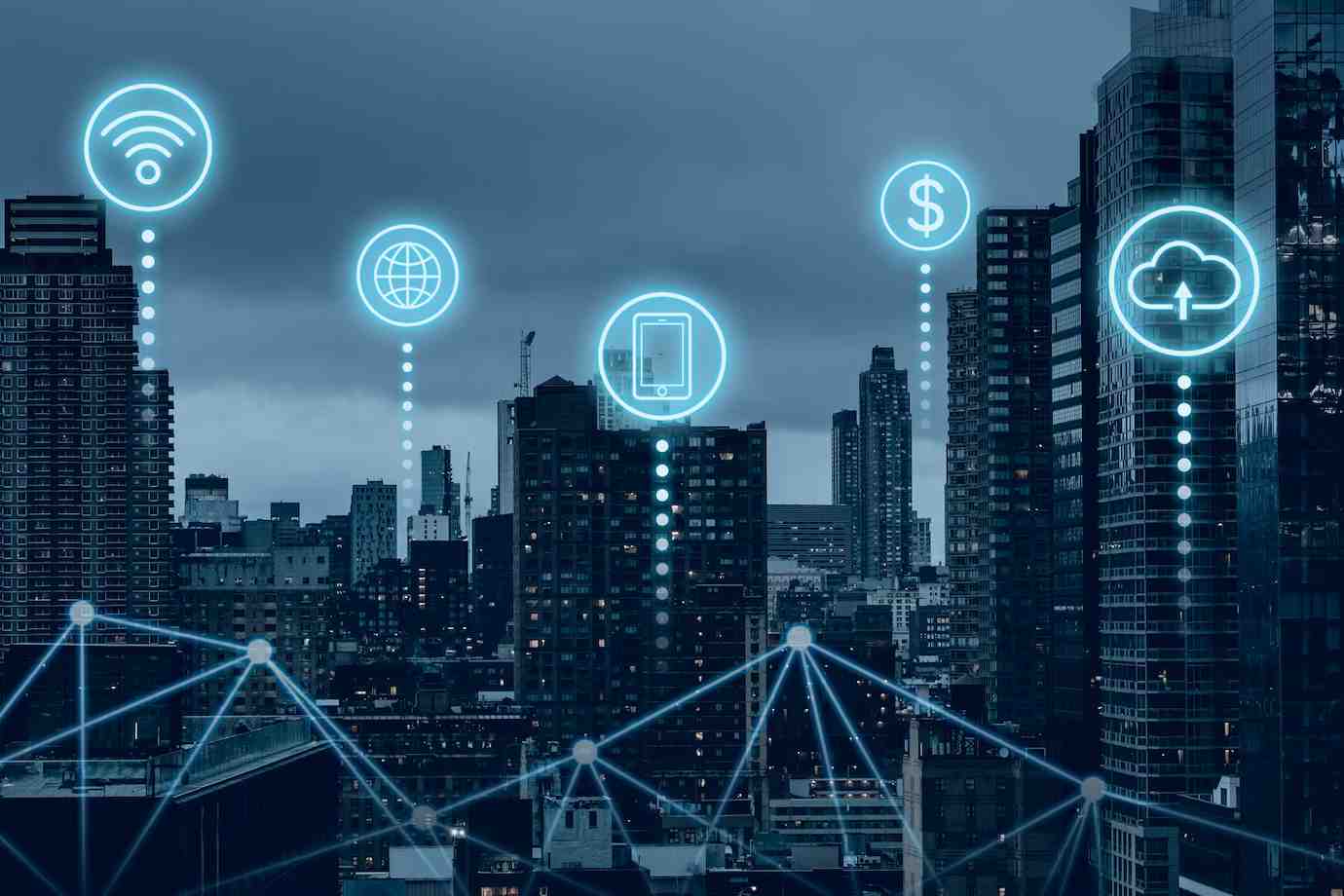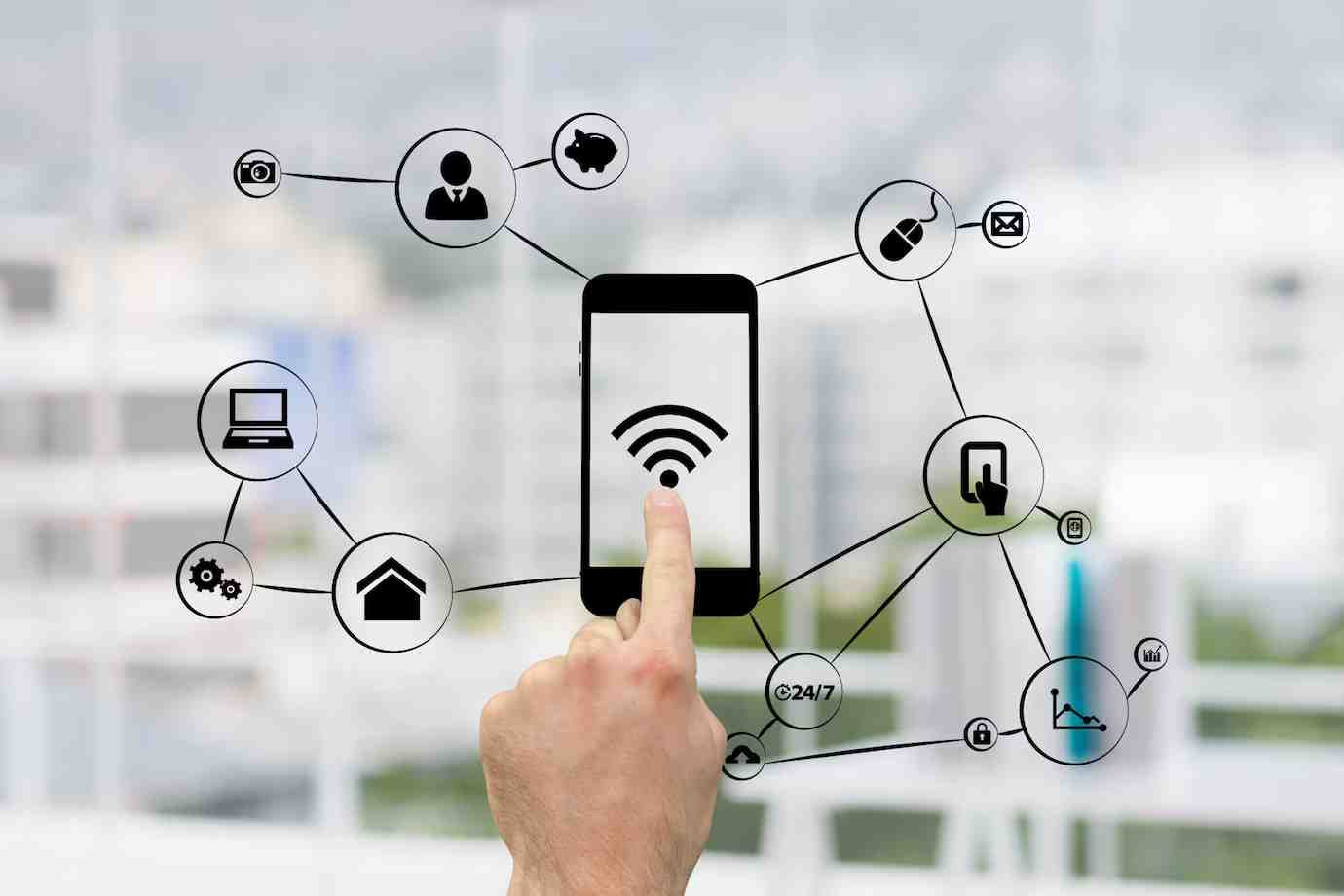How 5G Enhances Connectivity and Smart Devices
5G technology is transforming the way we connect with devices. It empowers smart connectivity, revolutionising sectors such as healthcare, transportation, and entertainment. This next-gen network provides ultra-fast speeds and low latency. It also has a high capacity, which allows for real-time communication and smooth IoT integration. In today’s digital age, staying connected is vital for

5G technology is transforming the way we connect with devices. It empowers smart connectivity, revolutionising sectors such as healthcare, transportation, and entertainment. This next-gen network provides ultra-fast speeds and low latency. It also has a high capacity, which allows for real-time communication and smooth IoT integration.
In today’s digital age, staying connected is vital for both businesses and people. Fast, reliable networks enhance productivity and ensure smooth digital interactions. 5G breaks through the limitations of earlier networks and unlocks new possibilities.
With the rise of 5G devices, our digital world is accelerating. Virtual meetings will flow seamlessly while 4K streaming dazzles with crystal clarity. Smart home management? Expect it to be faster and sharper than ever.
But that’s just the beginning! 5G also paves the way for autonomous vehicles and AI magic. As these innovations merge, we’re cruising toward a fully connected utopia. Welcome to the future, where speed meets smart in an electrifying embrace!

Understanding 5G Technology
What Is 5G Technology?
5G is the fifth generation of mobile networks. It marks a big step up from earlier versions. It offers faster speeds, lower latency, and the ability to connect more devices simultaneously. 5G goes beyond 4G, which mainly improved mobile internet. It creates a solid base for quick data transfers. It also supports IoT integration and real-time applications in various areas.
Key Features of 5G
- High-Speed Data Transmission: 5G is up to 100 times faster than 4G, enabling quick downloads and seamless streaming.
- Ultra-Low Latency: Near-instant response times ensure smooth interactions between devices.
- Massive Connectivity: 5G supports numerous devices simultaneously, driving IoT growth.
- Energy Efficiency: It uses less power, making it a more sustainable option.
- Enhanced Reliability: Even in high-demand environments, 5G maintains stable connections.

How 5G Revolutionizes Smart Connectivity
Faster Internet and Seamless Streaming
5G gets rid of buffering and lag. This means smooth streaming, UHD playback, and improved online gaming. This better connection lets users enjoy streaming without breaks, even at busy times.
Internet of Things (IoT) Expansion
5G devices play a critical role in accelerating IoT growth. 5G connects many devices at once. This boosts communication among smart homes, self-driving cars, and industrial automation systems. This transformation supports the development of smart cities and connected industries.
Improved Mobile Connectivity
Mobile users benefit from seamless coverage, even in densely populated areas. 5G provides fast access in cities and countryside, closing the digital gap and improving connections everywhere.

The Impact of 5G Devices on Industries
Smart Cities and Infrastructure
Cities are harnessing the power of 5G technology like never before. It changes the game for smart traffic management, energy-saving systems, and real-time surveillance. These innovations are the heartbeat of sustainable urban growth, breathing new life into city spaces. With 5G-enabled infrastructure, cities can maximize resources, untangle congestion, and elevate public safety. Better connectivity turns daily commutes into smooth trips. This improves life for all residents.
Augmented Reality (AR) and Virtual Reality (VR)
5G supercharges AR and VR, elevating gaming, training, and education to new heights. With lightning-fast speed and bandwidth, these technologies deliver seamless, immersive escapades. Feel every thrill and twist as high-quality rendering brings your surroundings to life. Enjoy interactive experiences that engage the senses and spark the imagination.5G and Cloud Computing
The integration of 5G and cloud computing is reshaping the digital landscape.
Cloud applications glide effortlessly, boasting lightning-fast speeds and minimal latency. Accessing large data sets is easy now. This helps businesses with better storage and processing power. Gone are the days of tethering to local hardware—freedom awaits.
Meanwhile, 5G devices revolutionise connectivity, allowing instant cloud synchronisation. This seamless link elevates user experiences, no matter the platform. 5G and cloud technology work together to boost efficiency and scalability for companies worldwide.
5G and Cybersecurity Concerns
While 5G brings numerous benefits, it also raises cybersecurity challenges.
As the web of connected devices grows, so does the vulnerability. The attack surface expands, inviting cyber threats to waltz in. Organizations need to step up with solid security measures. This includes encryption, network segmentation, and AI-driven threat detection. These steps are vital to safeguard against lurking dangers.
In this hyper-connected era, collaboration is key. Governments, tech providers, and cybersecurity savants must join forces. Together, they can forge secure frameworks that guard our digital future. Protecting sensitive data and ensuring 5G network reliability is crucial for nurturing sustained digital growth.
5G’s Role in Remote Work and Collaboration
The world of work has shifted, and remote reigns supreme. Reliable digital infrastructure is now the lifeblood of productivity. Enter 5G: the wizard weaving magic into virtual meetings and cloud collaborations. With lightning-fast connections, remote app access is just a click away.
Workers are reaping the rewards of crystal-clear communication and speedy data sharing. Productivity soars as barriers fall away.
As businesses embrace 5G devices, remote work becomes a symphony of efficiency. A connected workforce is on the horizon, crafting collaboration like never before.
5G and Edge Computing
5G is driving the growth of edge computing, where data processing occurs closer to the source. This cuts down latency and allows for quick decision-making. This is vital for fields like healthcare, logistics, and manufacturing.
With smart connectivity, businesses can streamline operations and gain insights from data faster. 5G-enabled edge computing empowers organisations to optimise their processes and improve overall performance.
5G and Smart Homes
5G technology is revolutionising smart homes, weaving seamless automation into everyday life. With a flick of a finger or a voice command, users control lighting, security, entertainment, and appliances.
Lightning-fast speeds and minimal latency supercharge the performance of your smart systems. Imagine Amazon Alexa and Google Home working perfectly. 5G provides strong connections for many IoT devices.
This high-speed harmony transforms homes into sanctuaries of efficiency, security, and convenience. Welcome to the future where smart living redefines reality!
5G and Wearable Technology
Wearable devices like smartwatches and fitness trackers are getting better with 5G. These devices provide real-time health monitoring and GPS tracking. They also send instant alerts, which improves the user experience.
Ultra-low latency and quick data processing boost the accuracy of wearables. This makes it easy to connect them with other smart devices. As 5G grows, wearables will evolve. They will offer better features in healthcare, fitness, and communication.
5G and Smart Agriculture
5G technology is transforming agriculture through smart farming solutions. Farmers can use 5G devices to check soil health, automate watering, and monitor livestock instantly.
Connected sensors and drones enhance precision farming, reducing waste and increasing yields. 5G technology promotes sustainability by optimising resource usage and improving overall agricultural productivity.
The Future of 5G and Smart Connectivity
Enhanced AI and Machine Learning Integration
- Faster speeds and better reliability will let AI applications handle large data sets in real-time. This will drive innovation.
Expansion of 5G in Rural Areas
- Expanding 5G to underserved areas will improve access to digital services. It will also enhance education and create more economic opportunities.
Next-Generation 6G Technology
- While 5G leads today, researchers are exploring 6G advancements.
- This aims for even faster speeds and smoother connectivity.
Pro Tip:
If you’re upgrading your device, look for one with full 5G support—not just for speed, but for future-proofing. With smart home systems, cloud apps, and wearables all going 5G, it’s a smart investment in a more connected lifestyle.
Quick Guide: Steps to Begin Embracing 5G Connectivity
- Upgrade to 5G-enabled devices—phones, routers, and wearables—to tap into faster, more reliable networks.
- Explore smart home integrations like connected lights, thermostats, and security systems that benefit from real-time control.
- Secure your 5G network with strong encryption and updated firmware to guard against emerging cybersecurity risks.
Frequently Asked Questions (FAQs)
1. How is 5G different from 4G?
5G is significantly faster than 4G, offering speeds up to 100 times higher and reducing latency for real-time interactions. It also supports a larger number of devices and improves energy efficiency.
2. How does 5G enhance IoT devices?
5G provides high-speed and low-latency connectivity, enabling seamless communication between IoT devices. This supports smart homes, connected industries, and autonomous vehicles.
3. What industries benefit most from 5G technology?
Industries such as healthcare, transportation, smart cities, and agriculture benefit greatly from 5G. It enhances telemedicine, boosts autonomous vehicle safety, and promotes smart infrastructure.
4. Are there security concerns with 5G technology?
Yes, the increased connectivity of 5G devices creates more opportunities for cyber threats. Organisations must implement strong security measures like encryption and AI-based threat detection.
5. How will 5G impact remote work?
5G boosts remote work. It improves video calls, speeds up cloud access, and ensures steady connections. This improves collaboration and boosts overall productivity.
Conclusion: 5G and the Future – Transforming Industries with Smart Connectivity
The rise of 5G technology is redefining how we interact with digital devices.
5G offers fast data speeds, low latency, and smooth IoT integration. It opens up endless opportunities in various industries. As sectors use 5G devices, the global economy will boost efficiency, spark innovation, and enhance digital inclusion.
Beyond entertainment, 5G revolutionises vital sectors like healthcare, transportation, and smart cities. Smart connectivity will spark new innovations that we can’t see yet. 5G connects us in new ways. It leads us to a smarter, more inclusive, and digitally empowered society.